Hazel Bruce has been a textile artist and educator since 1990, exhibiting nationally and internationally. She is a member of the 62 Group, a lecturer in Textile Art and Embroidery at Ulster University and a Senior Fellow of the Higher Education Academy.
Her work has recently been shown at the World of Threads Festival in Canada, the Miniartextile Borderline exhibition (organised by Arte & Arte in Italy) and the 8th International Biennial of Contemporary Mini Textile Art ‘Scythia‘ in Ukraine.
Hazel’s work explores pattern found in the urban landscape. She prefers to re-use textiles and is inspired by the age-old practices of mending, piecing and patching. She patches together found fabric, then builds up blocks of satin stitch texture using Irish machine stitching, adding hand-stitches to finish each piece. There is a tactile quality to her work, combined with a mesmerising use of pattern repetition with muted, calm colours.
As a university lecturer, she teaches her students techniques to help them start new projects. She uses these methods herself to guide her creative development process. In this interview, Hazel shares how she looks for repeated patterns in the urban world around her, then uses sampling and drawing to research composition ideas. Learn how to use these methods yourself and kick-start your next project.
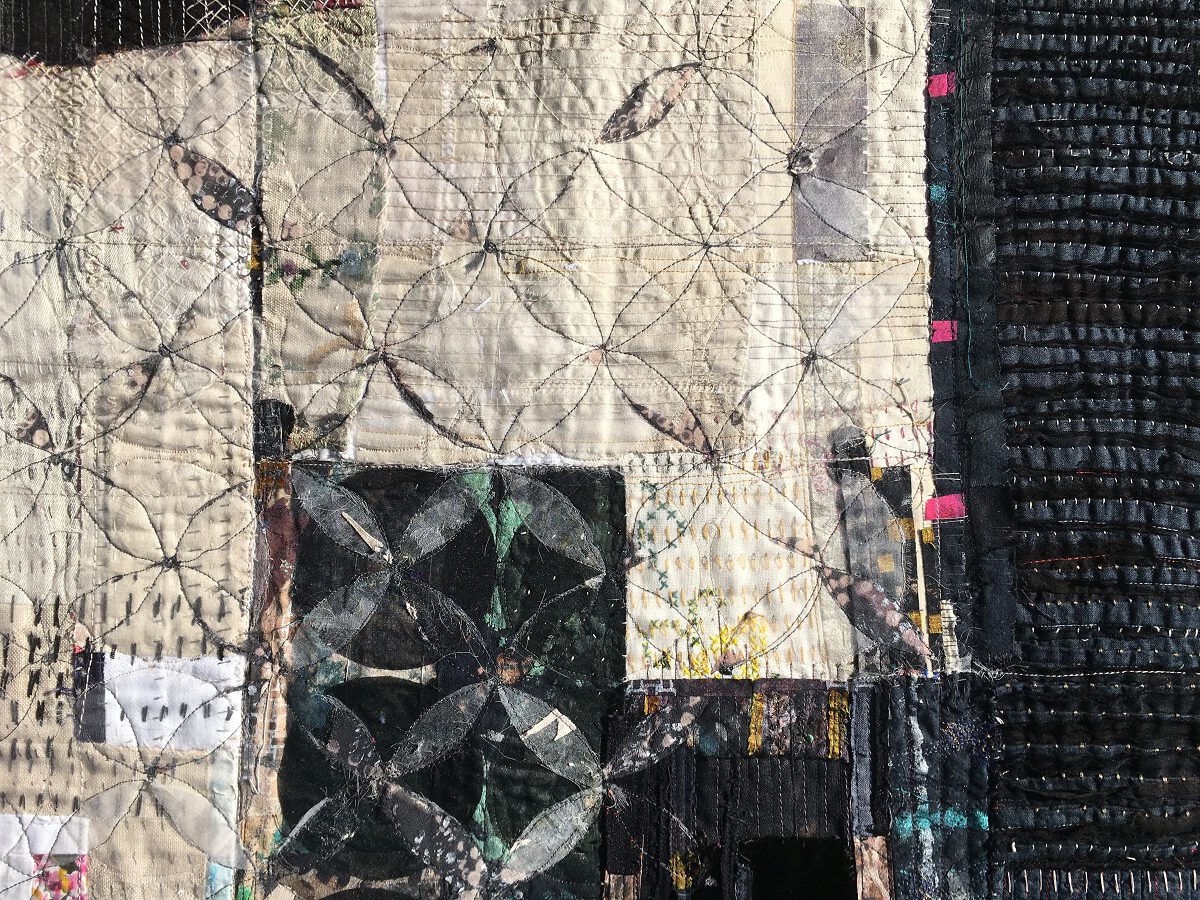
Finding the right path of study after a craft-filled childhood
TextileArtist.org: What initially attracted you to textiles as a medium? How was your imagination captured?
I grew up drawing, painting, sewing and making things like clothes, dolls and jewellery. I was a child of the 1970’s and with no digital distractions and long periods of time with nothing to do, we had to use our imagination to fill in the time.
By the time I went to high school I had a fair idea that I wanted to do something with textiles, but no real direction.
I made clothes in my spare time, so initially, I thought perhaps a career in fashion. I undertook a brilliant Foundation course at Jacob Kramer College in Leeds, which really opened my eyes to all the possibilities.
I understood then that it was possible to be a textile artist.
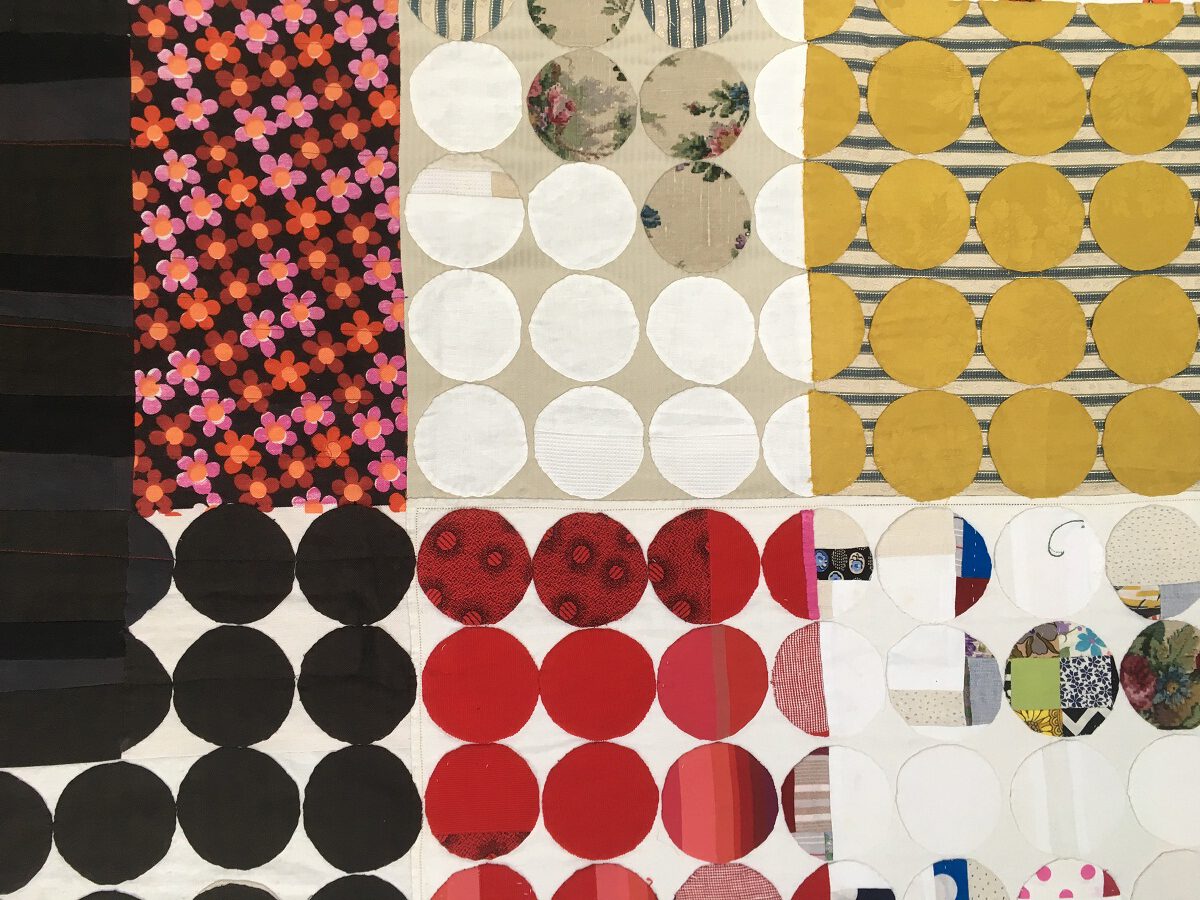
What or who were your early influences and how has your life/upbringing influenced your work?
I come from a family of makers. My grandmothers and great aunts were skilled and resourceful seamstresses; an economic necessity for working-class women in the first half of the 20th century. My mum made many of our clothes, dolls clothes and soft toys.
I grew up understanding that you could buy a garment, take a pattern from it, return it to the shop and make your own version!
In the late 70’s when drainpipe jeans became mandatory, I was able to turn my old flared jeans into something less shameful! By the early 80’s, I was sewing yards of nylon lace from Leeds Market onto just about everything as the New Romantic era arrived.
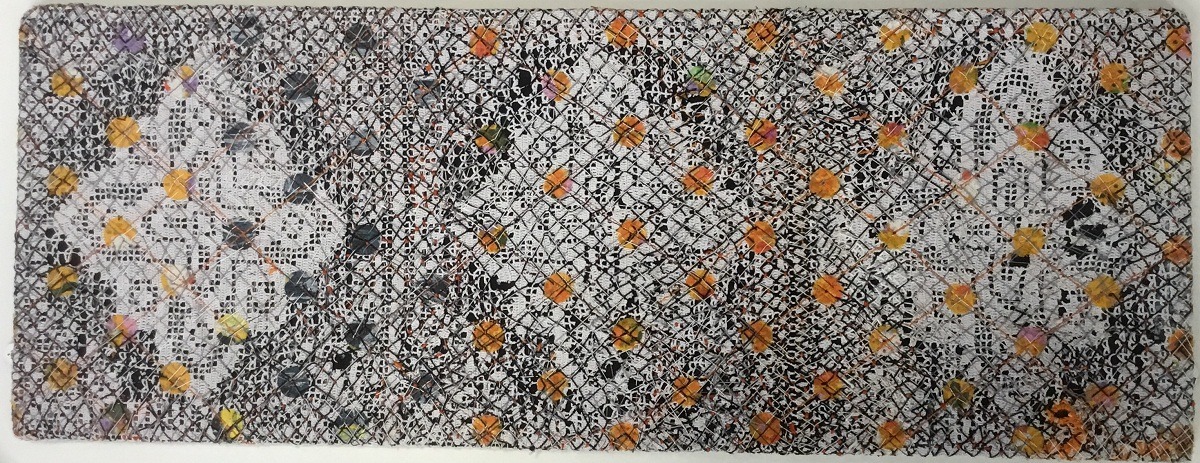
What was your route to becoming an artist?
After my Foundation course, I went to Manchester Polytechnic (now Manchester Metropolitan University) to do a degree in Embroidery. I was the last generation able to go to college without paying fees and in receipt of a full grant. We were so lucky to have this freedom. We had little money, but no debt. When I graduated in 1990 I was able to sign on to the Enterprise Allowance Scheme which gave people in the arts a safety net while they built their careers.
My work was well received at our degree show and that propelled me forward.
I joined the 62 Group in 1991 and worked at schools and colleges in the North West while trying to figure out what kind of artwork I wanted to make.
I moved to Belfast in 1992 to study for a Masters degree and have spent the last 26 years still trying to figure out what kind of artwork I want to make! I don’t have the answer yet. A number of underlying broad themes influence my work, but sometimes I’m completely stuck.
Over the years, I have worked in community arts, in the museum sector and in further and higher education. I have been a full-time lecturer in Textile Art, Design and Fashion at Ulster University since 2004. This role and the students there are my biggest influence and have the biggest impact on what I make today.
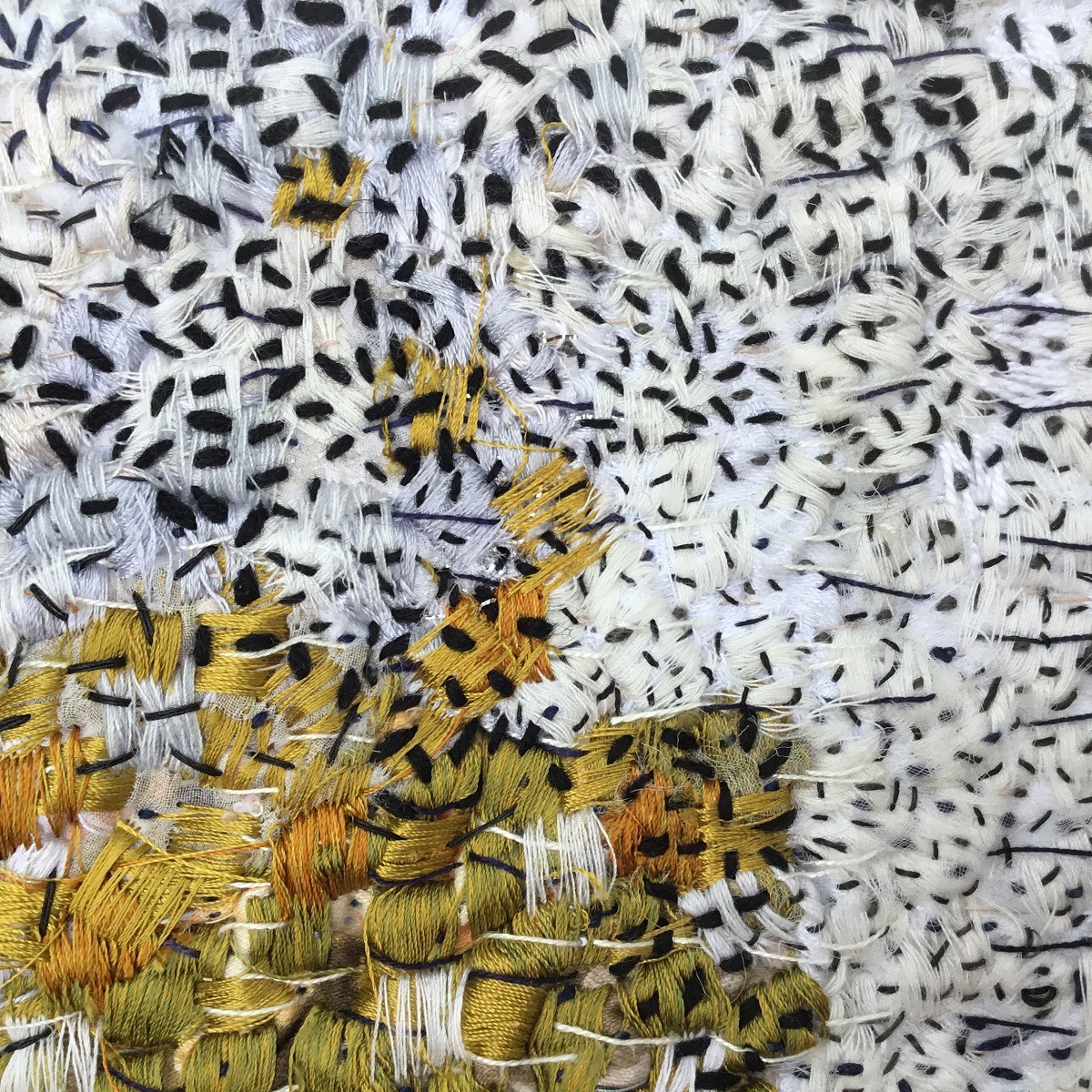
Piecing together fabrics, using repeat patterns
Tell us about your process from conception to creation
For years I was primarily interested in the fabric itself using stitch to construct, not to embellish or create a surface.
I dyed everything myself because I wanted to be in control of the colour. I liked working on a fairly large scale.
Later, I began to consider a more sustainable approach to work and decided to limit myself to using fabrics I already owned. For a number of years, I have been interested in the impact of such boundaries on my creative practice. Those limitations could be time, resources, energy, money or inspiration.
I don’t have one particular way of working. Sometimes I just sit at a machine and make marks on cloth, pinning the results on the wall until something begins to happen.
A lot of my teaching is geared towards helping my students get started. I want to guide them through that initial fear of beginning new work. I use a variety of techniques in my creative design. For example, I take lots of photographs of urban landscapes, particularly repeat lines, shapes and patterns. Sometimes I dye fabric or make collages. I do a lot of sampling, mark-making and drawing. I teach my students all of these methods of working.
Samples are often a big influence in my work. Also if I work to a brief or theme, this can focus my research into new directions.
I revisit my work quite a lot, cutting a piece up when it comes back from an exhibition, re-working it and integrating it into another piece. I’m not very precious about my work.
Often, I come back to simple shapes in repeat patterns. I do a pattern challenge with my students where we cut shapes from black paper and compose them on white, not moving on until we have exhausted every possibility. I often employ this technique if I need a bit of inspiration, especially for composition.
A couple of years ago my shoulder froze solid and I had to find a different way of working. I was trying to tempt my second-year students to use Irish machine stitching at the time, so was doing a fair bit of sampling. I realised I loved the possibilities the machine offers, so my recent work is more about the thread, not the fabric.
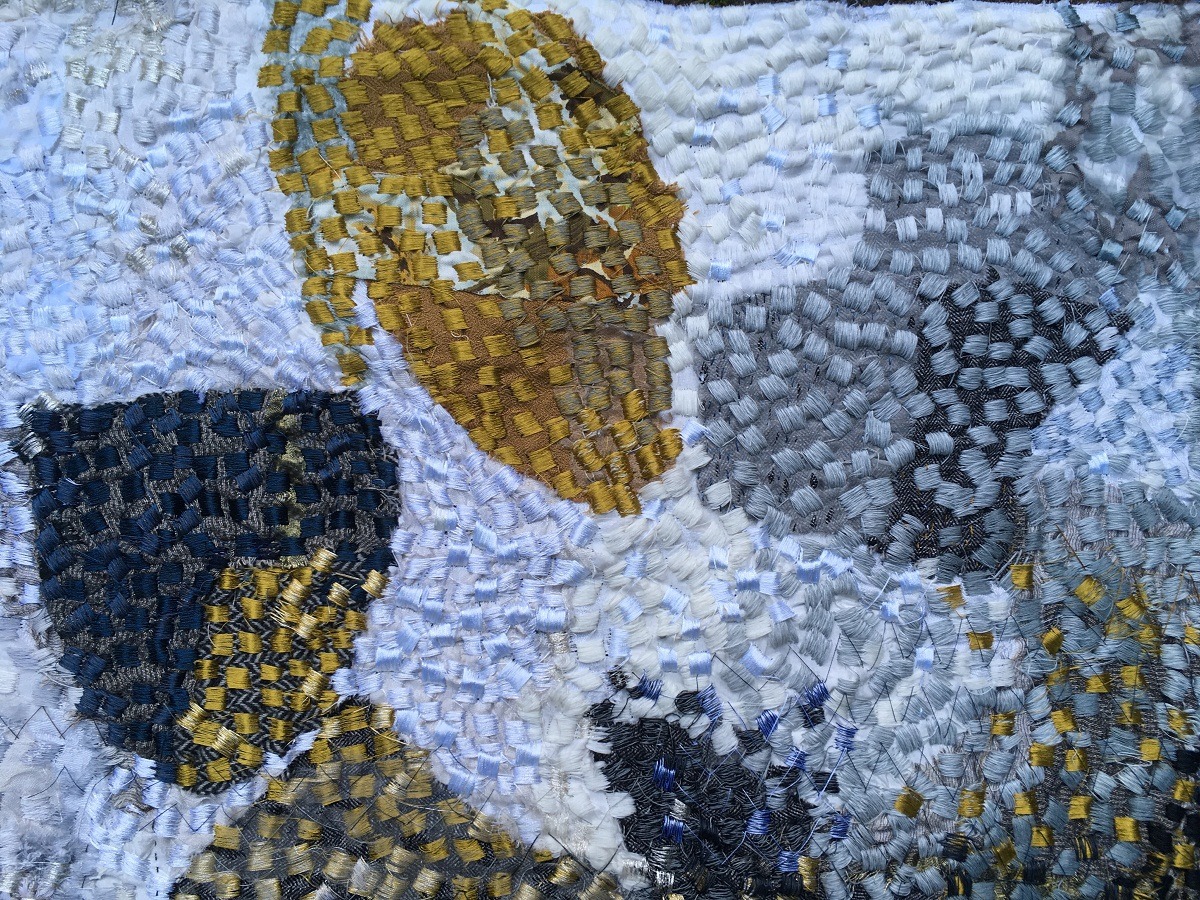
Tell us a bit about your chosen techniques and how you use them
I make collages with fabric, cutting things up, joining pieces together and cutting again.
I love repetition, so pleats and tucks were important to me for many years. I love a repeat straight line and the horizontal line created when tailor tacking.
It was such a cliché when I was at college in Manchester, but I do love the marks that appear on the back of the fabric. I will often work that way deliberately. For example, I often make big, rough cross stitches on cloth in order to achieve lovely imperfect horizontal stitches on the back.
I love construction marks and traces of mending.
Lately, I have been constructing work using Irish machine stitching. I use a repeat satin stitch block to build up the surface. I love that machine! This year, I need to begin to use the multi-needle but I’m struggling with the notion that I feel like I’m not actually making the work as the machine is working for me.
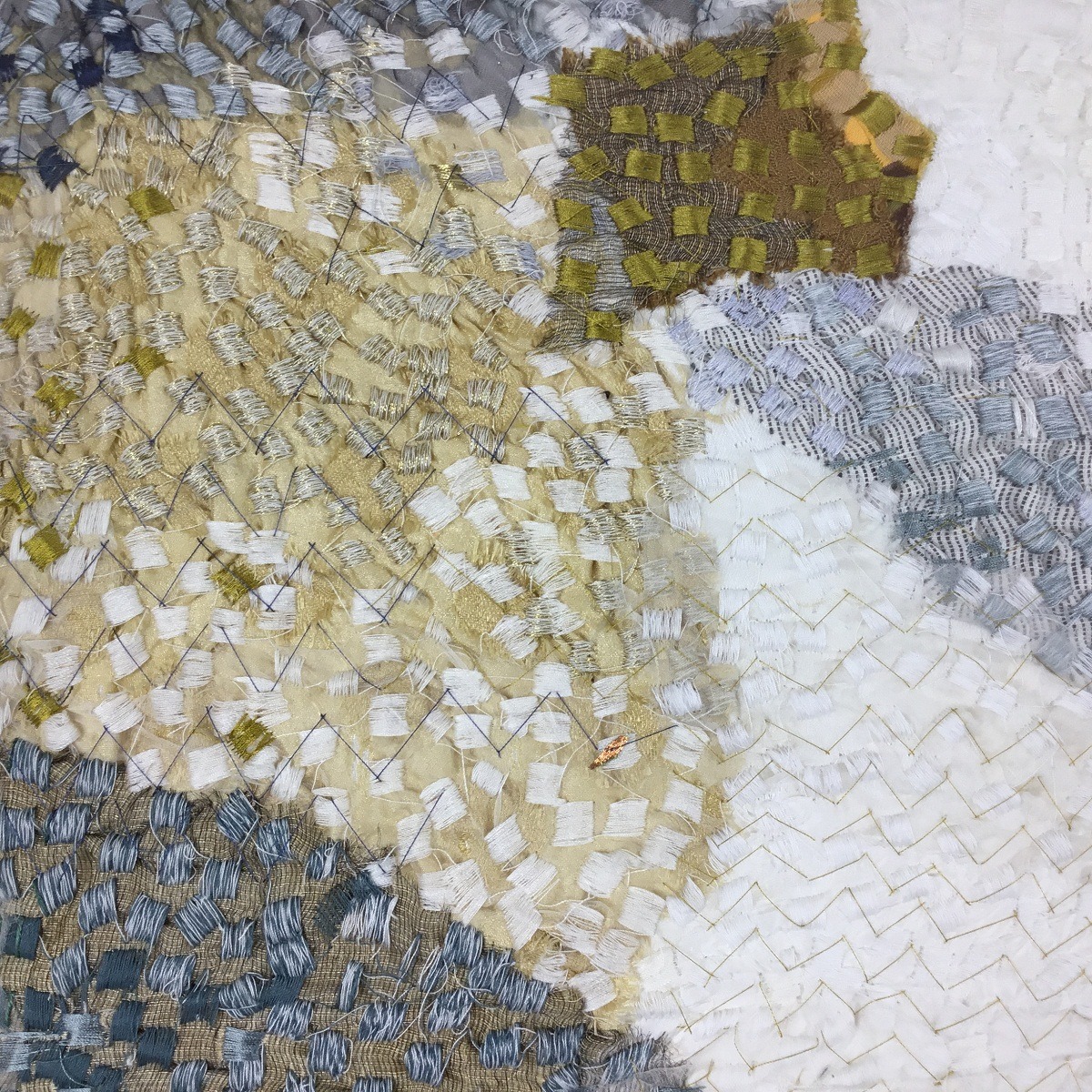
What currently inspires you?
I’m inspired by my students and colleagues and their passion for textiles and fashion.
I’m inspired people who have made great work with few resources. For example, the Gee’s Bend Quilters and shirt quilts made by Ulster linen workers.
At college in Leeds in the mid-1980’s, I found two seminal books on textile art, by Mildred Constantine and Jack Lenor Larsen (“The Art Fabric: Mainstream” and “Beyond Craft: Art Fabric“). The work included in these books is as inspiring to me now, as it was back then.
When I need to remind myself of what is important I always come back to work made during the two decades after the Second World War. Artists like Victor Pasmore, Ivon Hitchens, Gillian Ayres, William Scott and Shirley Craven always inspire.
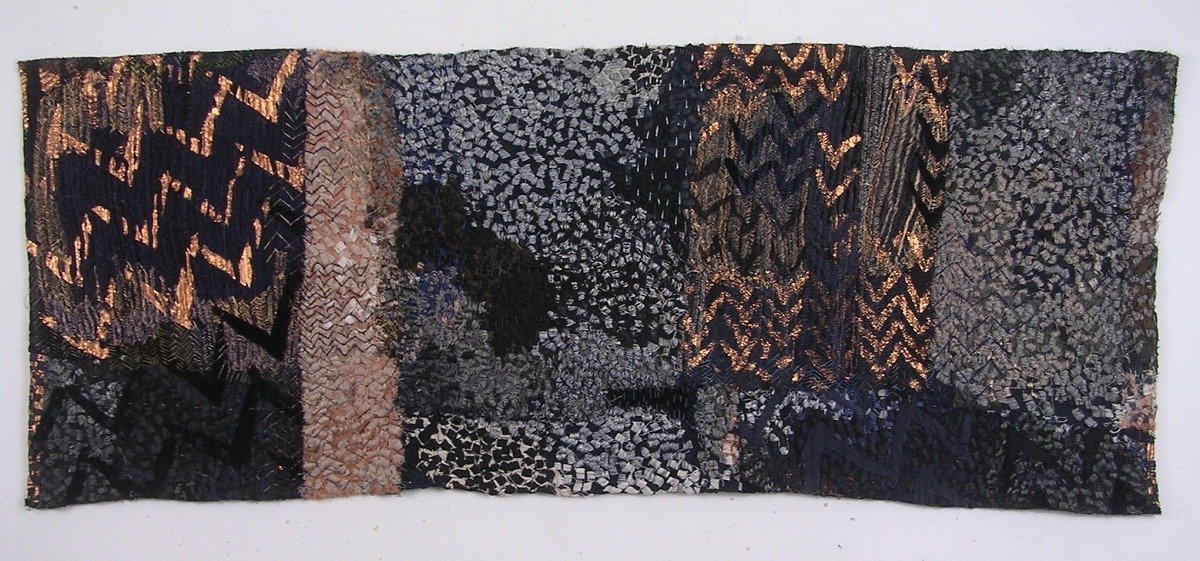
The curse of embroidery – ending up with something fairly busy!
Tell us about a piece of your work that holds particularly fond memories and why?
The last piece that I made has is for the World of Threads Festival in Canada. It is particularly important to me because it evolved from another unfinished work. I struggled with it for ages and just couldn’t complete it.
It’s always such a relief when you can save such a piece, especially after all the time you’ve invested in it!
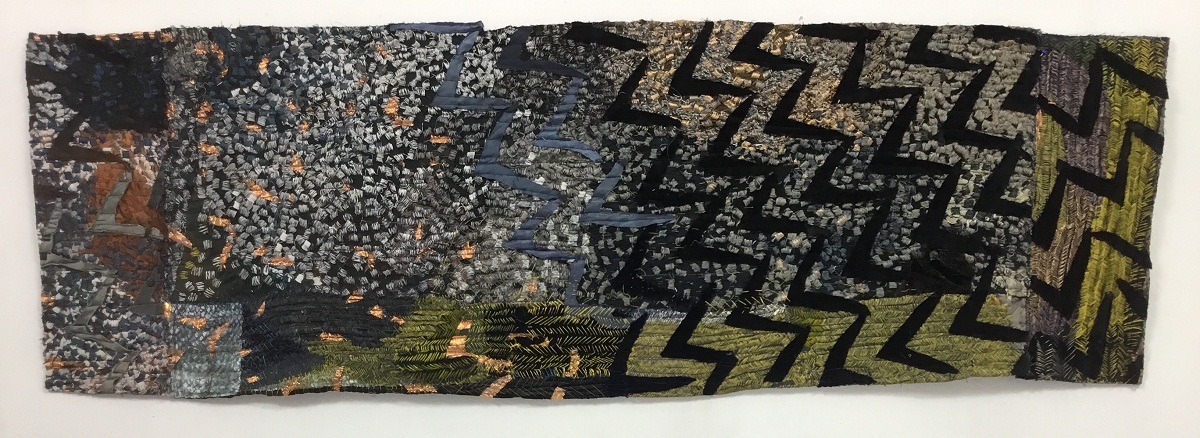
How has your work developed since you began and how do you see it evolving in the future?
I have always wanted to make really sparse work. I’d like to build large pieces with one or two shapes or marks intersecting, to create a simple bold composition. But I never actually end up making this kind of work!
Colour options, sewing techniques, fabric variation, different processes and lots of detail find their way into my work. I always tend to end up with something fairly busy! I think this is the curse of embroidery in a way.
So in the future, I would like to develop the ability to make uncluttered abstract work and be able to leave things out!
Also, I want to carve out some time to really experiment; for example with the Irish machine, multi-needle machines and our long arm quilter. I want to try things out and see what happens.
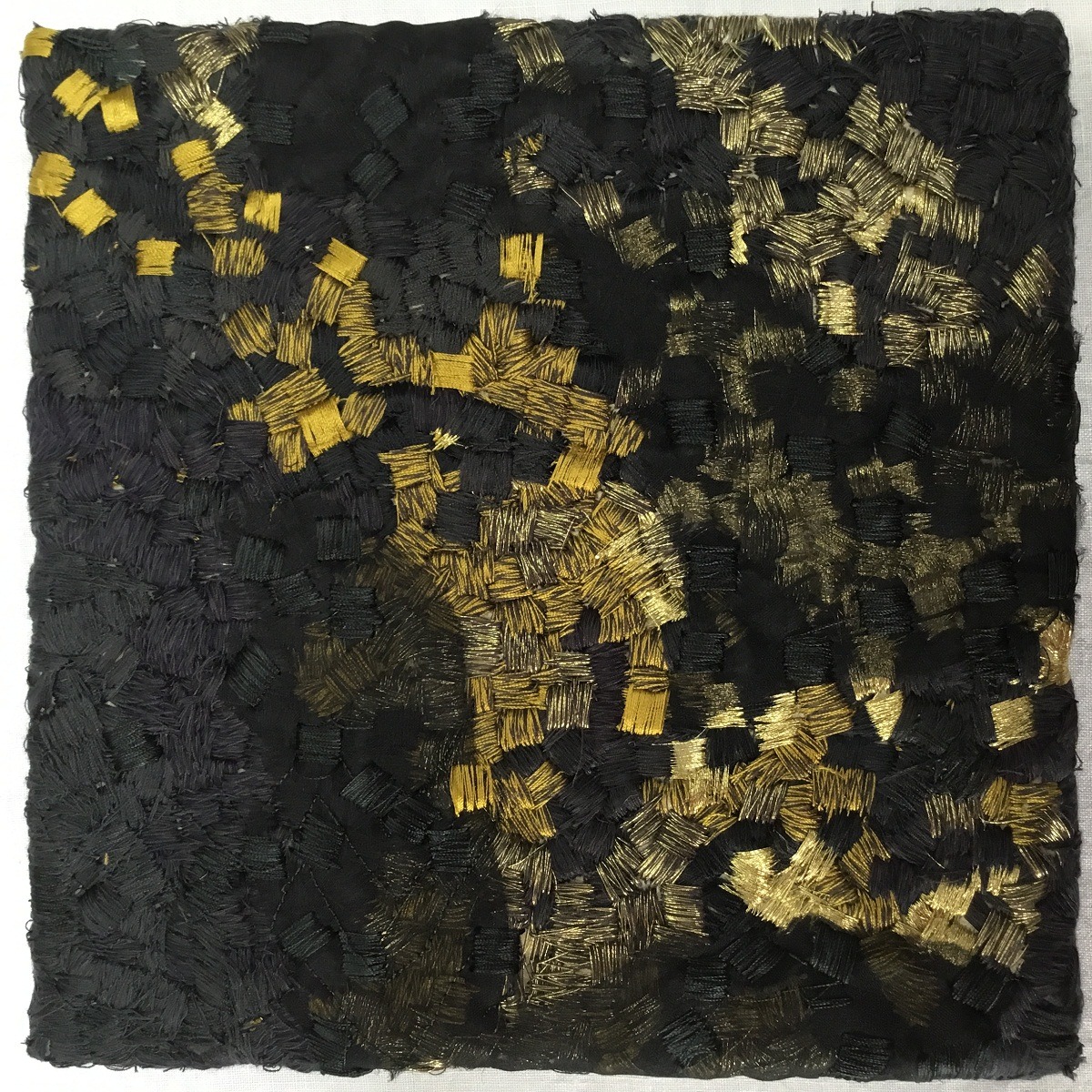
What advice would you give to an aspiring textile artist?
My advice would be to find a part-time job in the creative industries for a bit of financial security. Then use the rest of your time to make the work you want to make.
Secondly, join or start a group of artists to collaborate with. The 62 Group gave me the chance to exhibit regularly.
A number of my recent graduates and current students are setting up their own groups or collectives. They are doing some fantastic collaborative work with people from other disciplines in Belfast and that’s really inspiring!
For more information visit www.62group.org.uk
Do you like Hazel’s use of multiple repeat patterns to create such a mesmerising effect? Let us know by leaving a comment below
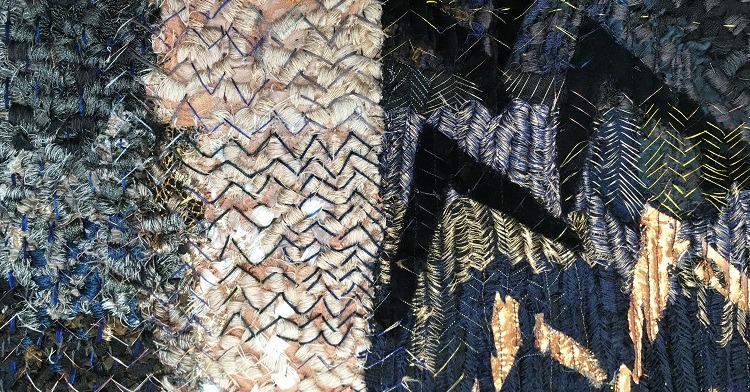
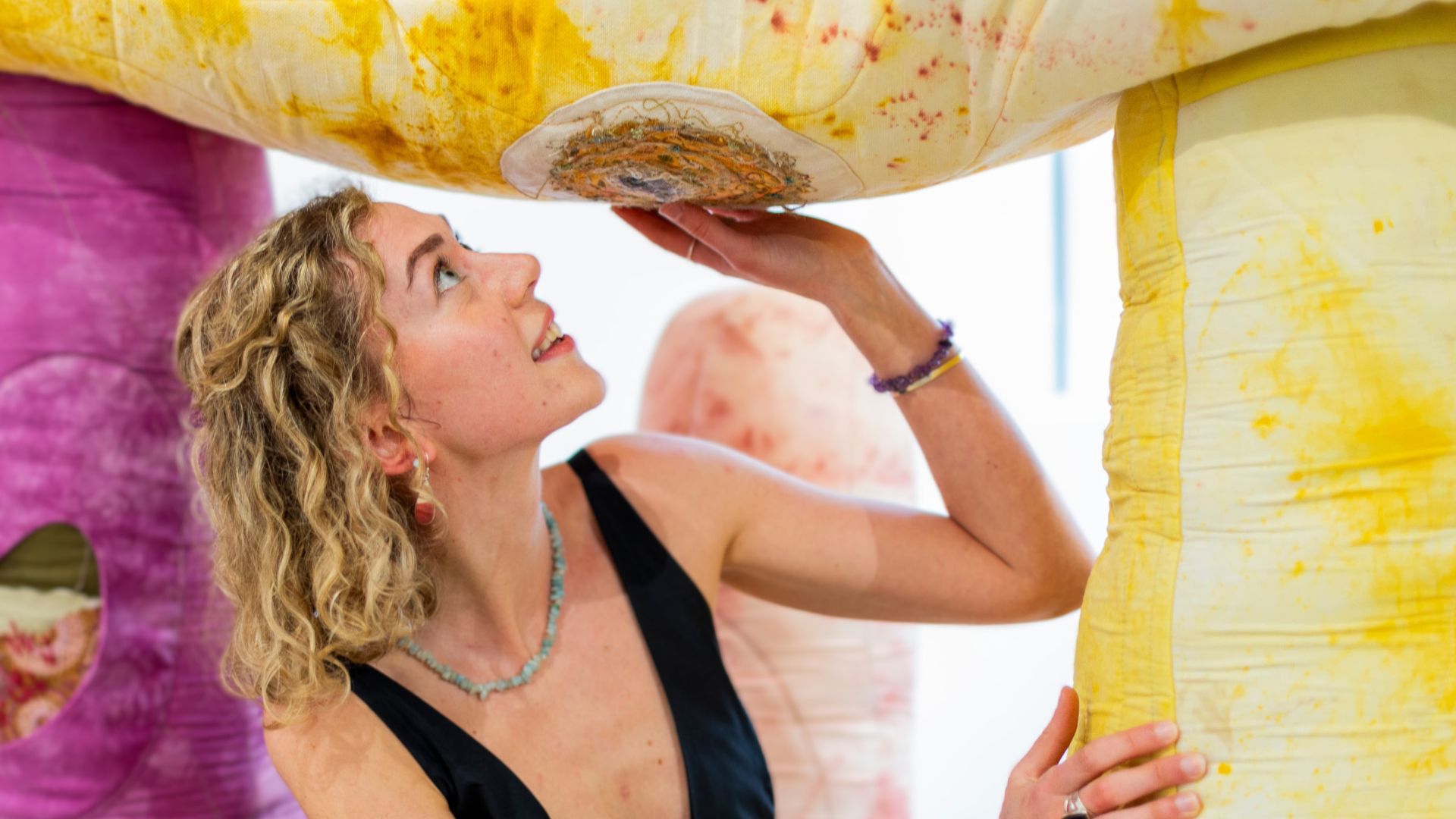
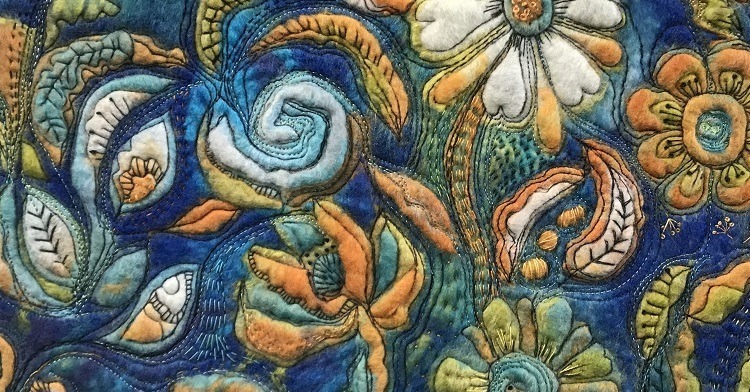
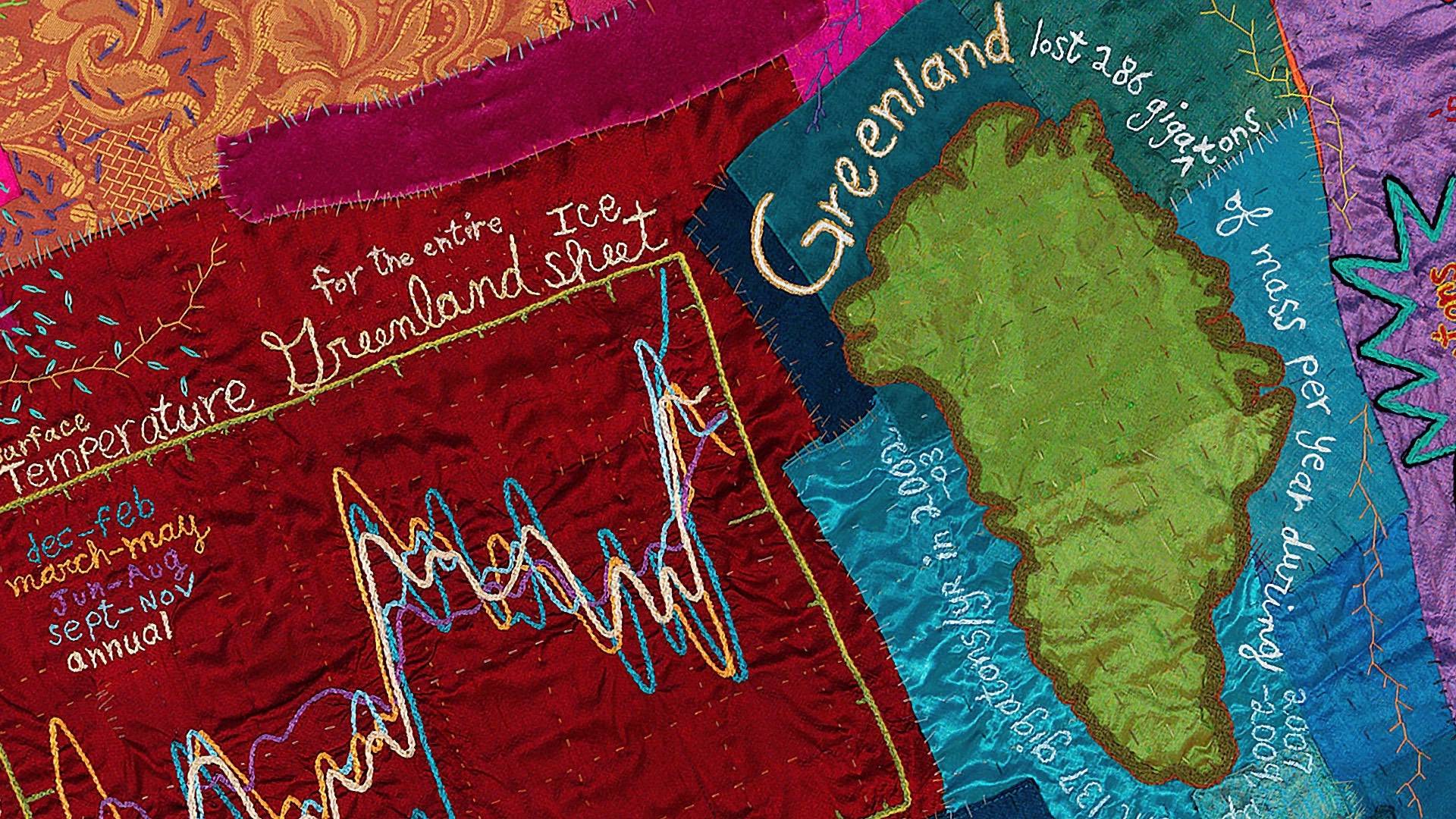
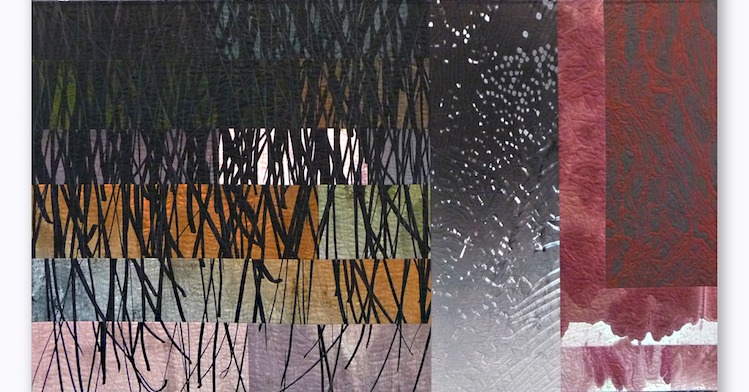
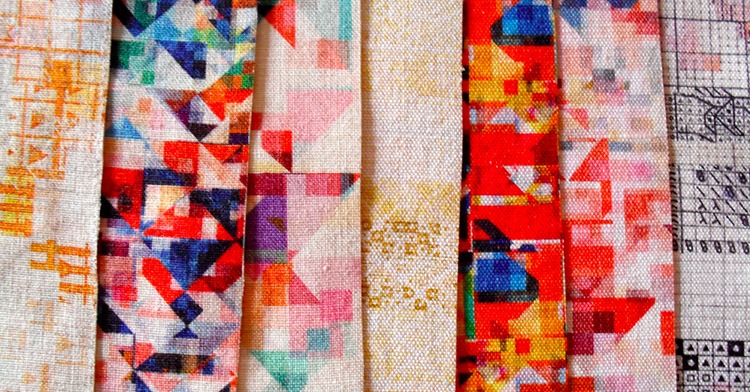
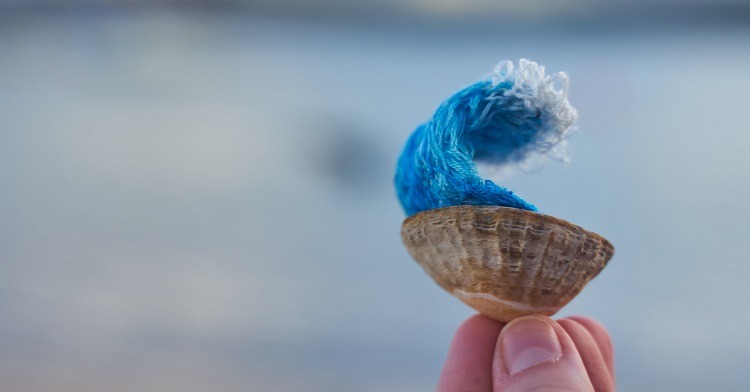
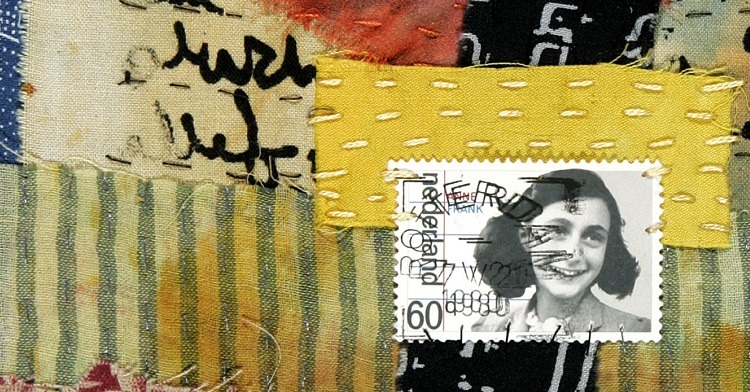
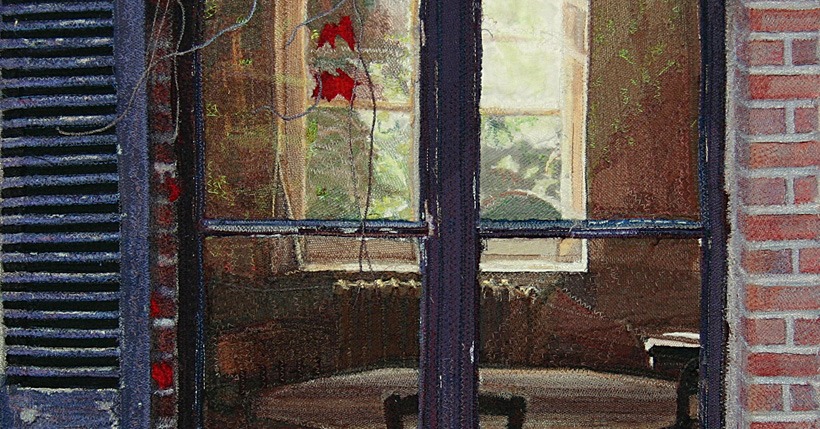
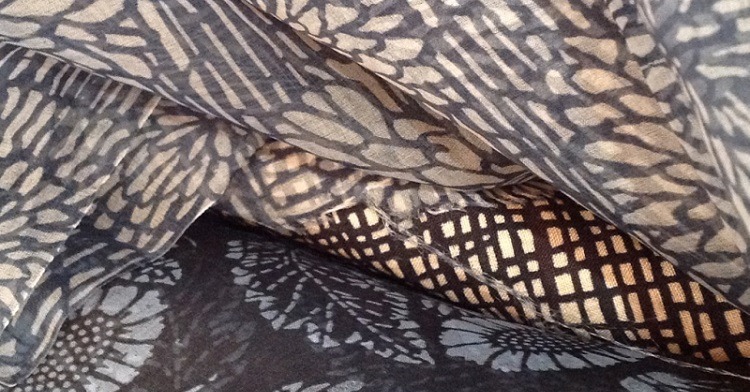
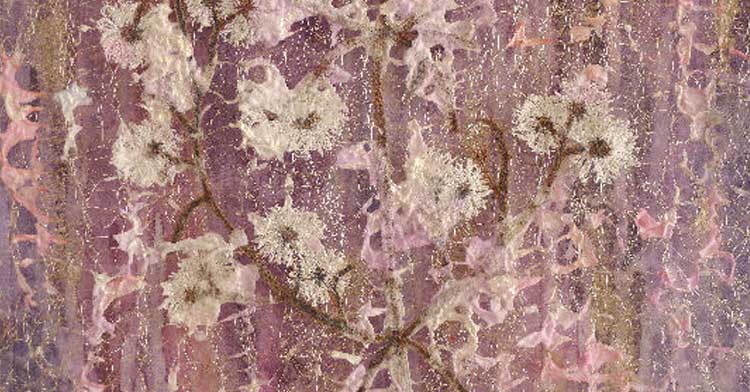
18 comments
Adoitsquare
Hazel Bruce’s creative use of “make do and mend” pieced fabrics, combined with repeated stitched pattern blocks, showcases the beauty of resourcefulness and craftsmanship.
Alison Schwabe
I loved your comments about cutting up stuff that has returned from exhibiting and re-working over it, not being too precious with it. I’m going to look through my images of art quilts and find one to give something of this kind of treatment to – very inspiring and completely in tune with the direction my textile art has taken in the last few years.
Nathan Philips
Great work & designs really awesome, I appreciate how you captured the intricate details so perfectly. The colors and textures are absolutely gorgeous. This is one of the most appealing pieces I’ve seen. Great job!
Eric Paul
Absolutely love the textures, patterns, colors and composition you create! Very interesting and impressive. I think there are many people like and visit it regularly, including me. I appreciate your own position and I will be sure to come back here.
Jewel Mackenzie
Really love this work and the emphasis on the stitchery as mark making. I am also interested in the reuse of fabrics through mending.
Thankyou Textileartist.Org for this article, I will research the artworks of Hazel Bruce.
Kate Winsent
Wonderful design and work are awesome. I like the fabric and stitches pattern.
Kathryn Hathaway
I would love to see what the approximate sizes of the pieces are? Could you add that information to the images?
Jane
Inspiring article and work – her voice resonates with many ideas in my head and feels very encouraging. I’m mystified by Irish machine stitching ??
Di Trasler
Wonderful work…love the colours and stitches you use to create lovely textures.I Love texture In artworks it is a dimension to add to make lux fibre art.
Carol wainwright
Her inspirations resonate with me and her comments regarding trying to make something simple, I too also end up with complex work. We can’t all be Gee’s Bend artists. Love the fabric, love the thread, love thecolour.
Holly Wilkes
Would like to see examples of the challenge patterns with black and white paper you do with your students.
Teresa Kuchinsky
This is beautiful and inspiring work for me – runs along the lines of thinking that are strong in me as well. Is there a publication available that showcases your work?
maria josefina palma
Gosto muito do seu trabalho . Sucesso !
Susan
Absolutely love the textures, patterns, colors and composition you create!
Joan McQuillan
Love Hazel’s use of repeat pattern. Something that I too like to use in my embroidered work
Great article. Thanks
Chris Raymond
Fascinating article, and love the work. I laughed at loud at Hazel’s comment that she always wants to make simple, abstract work but ends up with busy. I’m just the opposite, wanting to make busy work and always ending up with minimalist!
Jacqueline
Fascinating and inspiring work
Jacqueline
Margot
Love this work